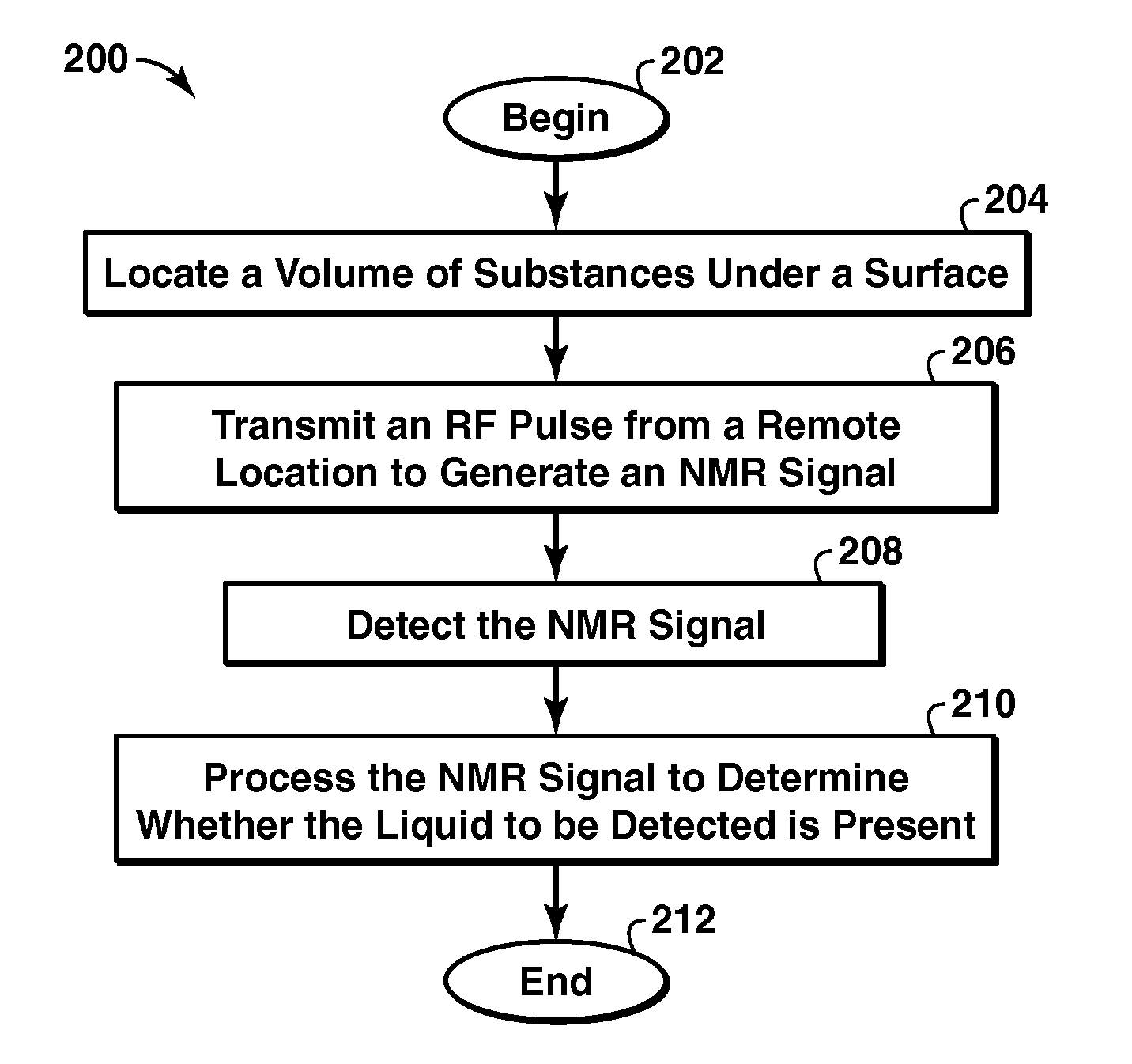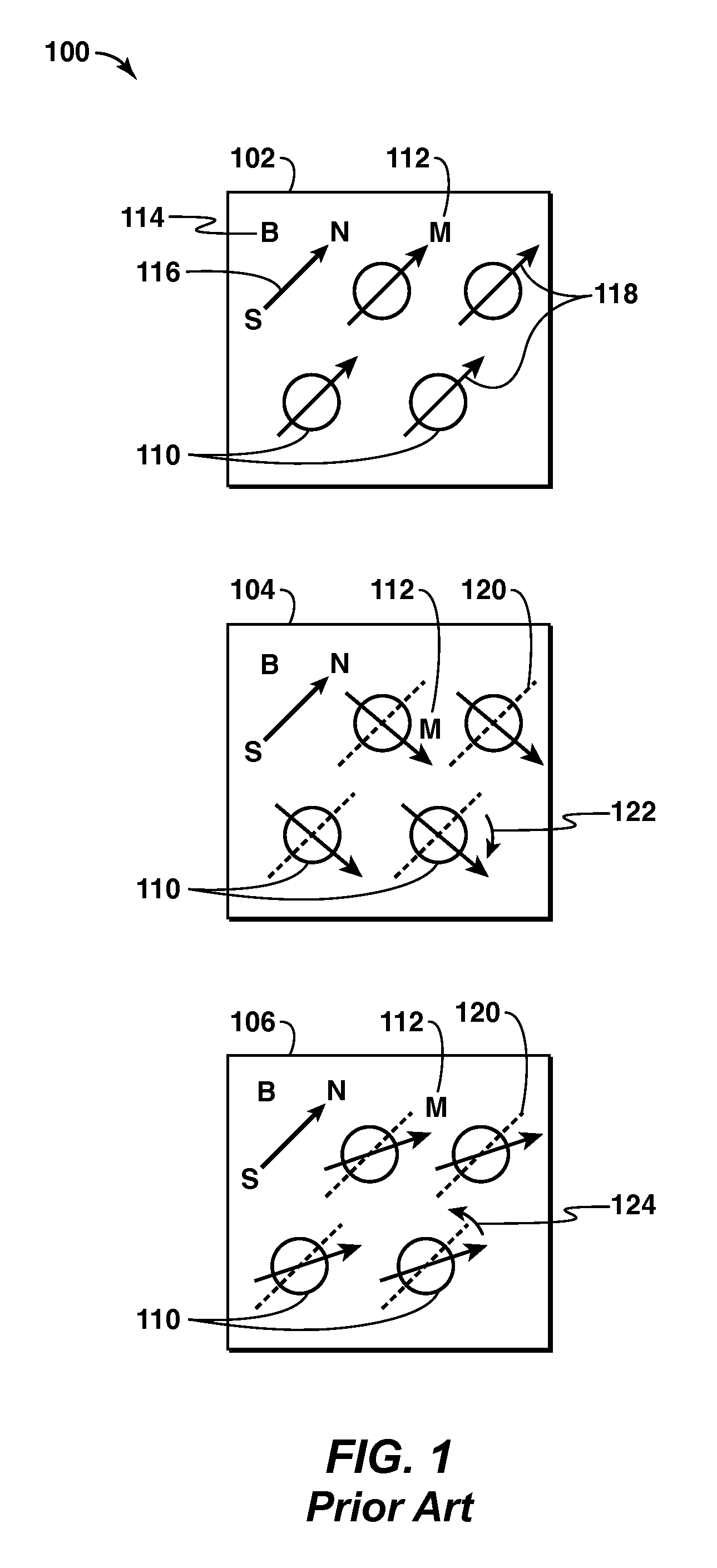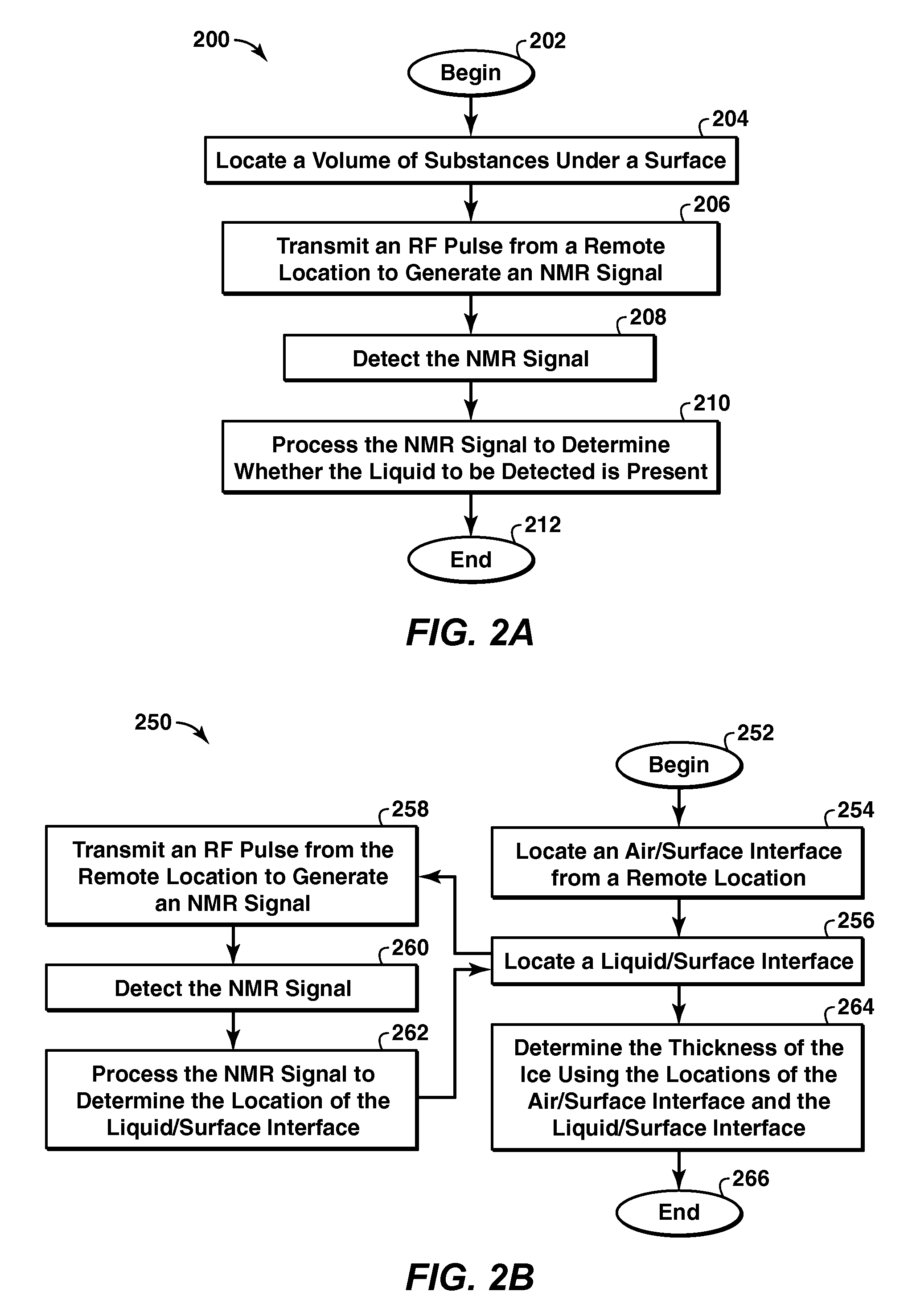Method And Apparatus For Detection of A Liquid Under A Surface
a technology of liquid detection and surface, applied in the field of methods and apparatus for the detection of liquids under surfaces, can solve the problems of not being used in the field, no effective technique for remotely sensing the location and extent of spillage under ice, and oil trapped beneath i
- Summary
- Abstract
- Description
- Claims
- Application Information
AI Technical Summary
Benefits of technology
Problems solved by technology
Method used
Image
Examples
Embodiment Construction
[0027]In the following detailed description section, the specific embodiments of the present invention are described in connection with preferred embodiments. However, to the extent that the following description is specific to a particular embodiment or a particular use of the present invention, this is intended to be for exemplary purposes only and simply provides a description of the exemplary embodiments. Accordingly, the invention is not limited to the specific embodiments described below, but rather, it includes all alternatives, modifications, and equivalents falling within the true spirit and scope of the appended claims.
[0028]The term “surface” as used herein refers to a layer of aqueous material that obscures visual detection of substances below the surface. More specifically, the surface may be snow, ice, or a layer of water or any combination thereof, such as, for example, broken up ice floating in water. The term surface does not include non-aqueous surfaces such as ear...
PUM
 Login to View More
Login to View More Abstract
Description
Claims
Application Information
 Login to View More
Login to View More - R&D
- Intellectual Property
- Life Sciences
- Materials
- Tech Scout
- Unparalleled Data Quality
- Higher Quality Content
- 60% Fewer Hallucinations
Browse by: Latest US Patents, China's latest patents, Technical Efficacy Thesaurus, Application Domain, Technology Topic, Popular Technical Reports.
© 2025 PatSnap. All rights reserved.Legal|Privacy policy|Modern Slavery Act Transparency Statement|Sitemap|About US| Contact US: help@patsnap.com



